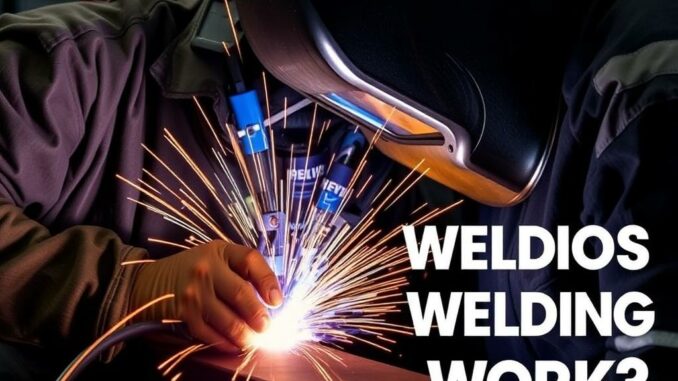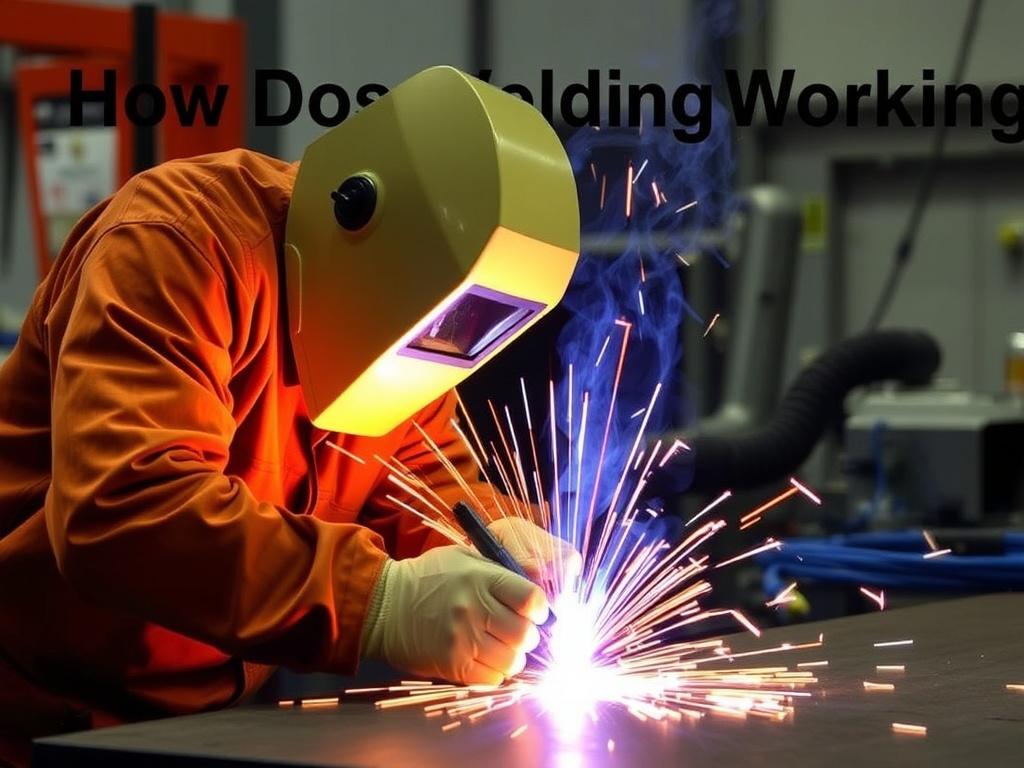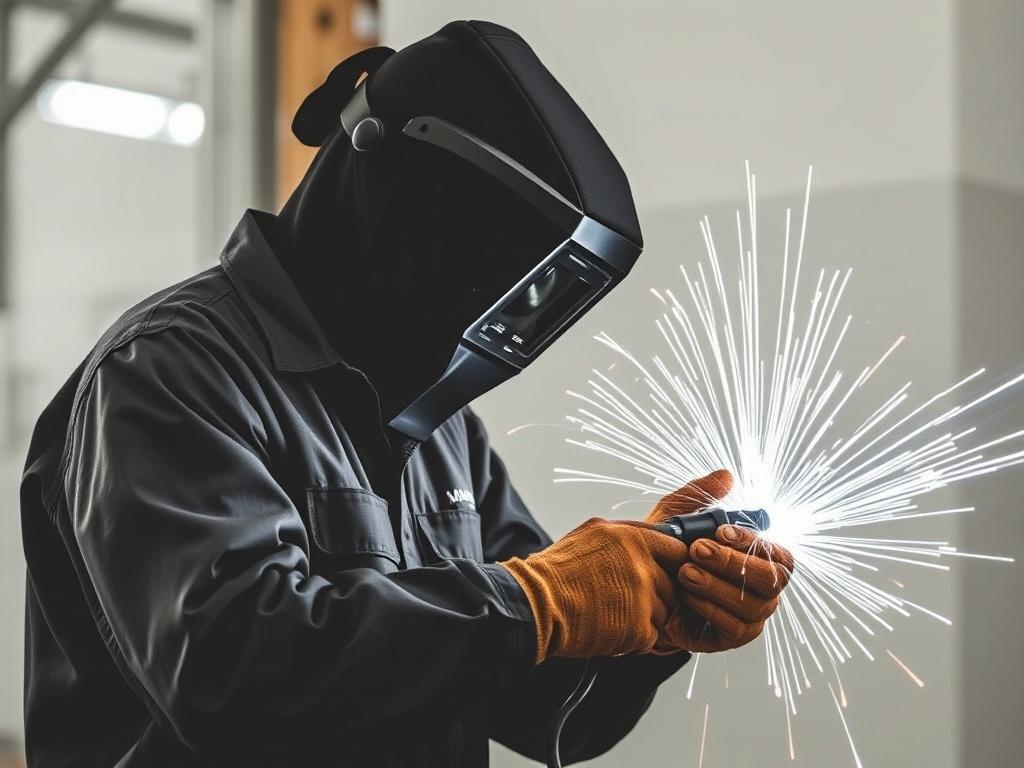
Welding is a fascinating and essential process that has shaped the way we build everything around us—from towering skyscrapers and intricate bridges to the cars we drive and the gadgets we use daily. But despite its widespread use, many people don’t fully understand the science behind welding and how this seemingly magical technique literally fuses metals together to create strong, lasting bonds.
In this article, we will explore in great detail how welding works, diving into the science, the different techniques used by professionals, and why welding remains critical in manufacturing, construction, and even art. Whether you’re a curious beginner or just someone who wants to know more about this essential craft, this guide will help you unlock the mysteries behind welding.
What Is Welding?
At its core, welding is the process of joining two or more pieces of metal by heating the parts to their melting point and then allowing them to fuse together. This fusion creates a strong, continuous bond that is often as strong—or even stronger—than the base materials themselves.
Welding isn’t just a simple act of sticking two parts together. It involves precise control of heat, pressure, sometimes filler materials, and often a protective atmosphere to prevent oxidation or contamination. It’s a perfect blend of science, technique, and craftsmanship.
The Basic Science of Welding
To understand how welding works, we must first understand the science of metals and heat. Metals are crystalline structures made up of atoms arranged in a repeating pattern. When heat is applied, these atoms gain energy and begin to move more freely, eventually reaching a point where the metal melts—from solid to liquid.
During welding, a focused heat source melts the metals at the joint. If filler material is used, it melts alongside, combining molten metals into one continuous mass. When cooled, the metal solidifies, leaving a strong bond in the region known as the weld bead. Controlling the cooling rate and the environment around the weld plays a crucial role in determining the quality and strength of the weld.
Different Types of Welding Processes
Welding isn’t just one process—there are many types, each suited to specific applications, materials, and desired results. The choice of welding method depends on the materials involved, the thickness of the metals, the environment, and the required strength of the joint.
1. Arc Welding
Arc welding is one of the most common and versatile welding processes. It utilizes an electric arc as the heat source. An electric arc is a continuous discharge of electricity through the air between two electrodes, generating extremely high temperatures.
Popular arc welding techniques include:
- Shielded Metal Arc Welding (SMAW): Also known as stick welding, it uses a consumable electrode coated with flux to protect the weld area from contaminants.
- Gas Metal Arc Welding (GMAW/MIG): Uses a continuous wire feed as the electrode and an inert gas like argon or CO2 to shield the weld from the atmosphere.
- Gas Tungsten Arc Welding (GTAW/TIG): Employs a non-consumable tungsten electrode with a shielding gas, providing excellent control and quality for thin or precise welds.
2. Resistance Welding
In resistance welding, heat is generated by passing electrical current through the resistance caused by the contact between two or more metal surfaces. This heat, alongside the pressure applied by electrodes, forms the weld.
Common types include:
- Spot Welding: Perfect for joining sheet metals; widely used in automotive manufacturing.
- Seam Welding: Similar to spot welding but creates a continuous weld along a seam.
3. Gas Welding
Gas welding, also known as oxy-fuel welding, uses a flame produced by burning a mixture of oxygen and a fuel gas (usually acetylene) to melt the base and filler metals. Though not as common in heavy industrial applications, it’s still widely used for maintenance, repairs, and artistic metalwork.
4. Laser and Electron Beam Welding
For ultra-precise and high-speed welding, laser and electron beam welding are industrial methods that use concentrated beams of energy to melt the materials. These welding techniques cause minimal distortion and can weld very thin or extremely thick materials.
The Science Behind the Heat Source
What makes welding possible is the heat applied to metals, which raises their temperature to their melting points. But achieving this heat efficiently and precisely requires understanding physics and material science.
The melting temperature of any metal is crucial. For example, steel melts around 1370°C to 1510°C, aluminum around 660°C, and titanium about 1668°C. The heat source must generate enough energy quickly enough to melt and fuse without warping or destroying the surrounding metal.
Different heat sources deliver this energy in unique ways:
| Heat Source | How It Works | Typical Uses |
|---|---|---|
| Electric Arc | Electric current jumps across a gap creating plasma with temperatures up to 6500°F. | Metal fabrication, construction, shipbuilding |
| Resistance Heat | Electric current delayed by resistance generates heat at the contact point. | Automotive body panels, appliances |
| Oxy-Fuel Flame | Combustion of fuel gas with oxygen creates a flame reaching 3200°C. | Pipe welding, repairs, artistic metalwork |
| Laser / Electron Beam | Concentrated beams focus energy for precise, deep welds. | Electronics, aerospace, precision engineering |
Filler Materials and Their Role in Welding
Often, welding doesn’t just involve melting the base metals—it also includes adding filler materials. These materials help bridge gaps, improve strength, and sometimes even add corrosion resistance or other beneficial properties.
Filler metals come in rods, wires, or powders and are selected based on compatibility with base metals. For example, a common steel weld might use a filler metal with similar carbon content and alloying elements to the base metals to ensure a uniform weld.
Using the right filler material is crucial because mismatched fillers can lead to weak welds or increased susceptibility to cracking or corrosion.
How Filler Material Affects Weld Quality
- Strength: The filler must have mechanical properties that complement or exceed the base metals.
- Corrosion Resistance: In environments prone to oxidation or chemical exposure, the filler can help protect the joint.
- Compatibility: The filler should meld well with the base metals chemically and physically to prevent defects.
The Importance of Shielding Gas and Atmosphere Control
When metals are heated, their surfaces become highly reactive, especially with oxygen and nitrogen present in the air. These gases can cause defects such as porosity, oxidation, or brittleness in the weld.
To protect the molten metal and ensure a clean weld, welding processes often employ shielding gases that create a protective atmosphere around the weld pool.
Common Shielding Gases
- Argon: An inert gas that prevents oxidation without reacting with the molten metal. Used widely in TIG and MIG welding.
- Carbon Dioxide (CO2): Active gas that can improve weld penetration but causes more spatter. Often mixed with argon for MIG welding.
- Helium: Inert and enhances heat input; often mixed with argon for aluminum welding.
The choice of shielding gas dramatically impacts weld appearance, strength, and soundness.
The Welding Joint and Preparation
Before welding can begin, the materials must be properly prepared. The shape and design of the welding joint affect penetration, strength, and ease of welding.
Common Joint Types
| Joint Type | Description | Common Applications |
|---|---|---|
| Butt Joint | Two pieces placed end-to-end on the same plane. | Pipeline construction, frame fabrication |
| Tee Joint | One piece perpendicular to another, forming a ‘T’ shape. | Structural frames, supports |
| Lap Joint | One piece overlaps another. | Sheet metal, automotive bodies |
| Corner Joint | Two pieces meet at a right angle creating a corner. | Boxes, frames, enclosures |
Proper cleaning and alignment are essential before welding. Dirt, rust, or oil can contaminate the weld and result in faults or weak spots.
Metallurgy and Cooling in Welding
The science behind welding doesn’t stop at melting metals—it extends deeply into what happens as the metals cool and solidify. Metallurgy, the study of metals and their properties, plays a critical role here.
As the molten weld cools, crystals begin to form and grow—a process known as solidification. The size, shape, and distribution of these crystals determine the final strength and toughness of the weld.
If the cooling happens too quickly or unevenly, it can cause residual stresses, cracking, or warping. Welding experts carefully control cooling rates through preheating, post-weld heat treatments, and even the design of the welding operation itself to ensure durable and resilient joints.
Welding Safety and Precautions
Welding involves high temperatures, bright light, electrical currents, and potentially hazardous gases. Safety is paramount. Here are some essential precautions to ensure a safe welding environment:
- Protective Clothing: Welders should wear flame-resistant gloves, aprons, and long sleeves to guard against burns and sparks.
- Proper Eye Protection: Welding arcs produce intense ultraviolet and infrared light. Helmets with appropriate shading protect the eyes from “arc eye” injuries.
- Ventilation: Welding fumes and gases can be harmful. Working in well-ventilated areas or using fume extraction systems is important.
- Electrical Safety: Welding equipment uses high current. Proper grounding and insulation help prevent electrical shocks.
- Fire Safety: Welding sparks can ignite flammable materials. Keeping the work area clear and having fire extinguishers handy is essential.
Common Applications of Welding
Welding is everywhere! Its applications stretch across diverse fields and industries. Some of the most prominent uses include:
- Construction: Building bridges, skyscrapers, storage tanks, and pipelines.
- Automotive: Assembling cars, trucks, and heavy machinery.
- Shipbuilding: Fabricating hulls and superstructures of ships and submarines.
- Aerospace: Creating aircraft components that need to be both lightweight and durable.
- Artisan Works: Sculptures and decorative metal art.
- Manufacturing: Production of appliances, tools, and equipment.
The Future of Welding: Automation and Robotics

Advances in technology are revolutionizing how welding is performed. Automated and robotic welding systems use precise controls, sensors, and artificial intelligence to optimize weld quality and speed.
Robots can take over repetitive, dangerous, or highly precise welding tasks, improving workplace safety and productivity. These systems use cameras, machine learning, and sophisticated software to adapt welding parameters in real-time, ensuring consistent quality.
Moreover, developments in new welding techniques, such as friction stir welding and additive manufacturing (3D printing with metals), promise exciting potentials to create stronger, lighter, and more complex structures.
Summary: Understanding Welding’s Science Makes All the Difference

Welding is a remarkable process rooted deeply in the principles of physics, chemistry, and materials science. By understanding how welding works—the role of heat, filler metals, shielding gases, joint design, and cooling—you can appreciate not only the craftsmanship but also the intricate science that makes it possible.
From the glow of an electric arc to the precision of laser welding, each method harnesses the power of energy, atoms, and molecular bonds to create structures that hold our world together. Whether you’re a budding welder, an engineering enthusiast, or simply curious about the work behind the scenes that shapes our modern world, knowing the science behind welding unveils a captivating story of innovation, skill, and technology.
So next time you see a spark flying or a seam being welded, you’ll know—there’s a complex and fascinating science happening right before your eyes.
